YouTube vs. TikTok Ads: A Decisive Guide for Your Brand
When considering expanding your brand’s advertising presence to new platforms, you are likely looking to reach new audiences, build your brand recognition and or scale your business results. Over the last couple of years, video-marketing platforms, like YouTube and TikTok, have grown immensely in not only their daily active user count but also in their platform offerings.
In this article, we’ll dive deep into who is active on these platforms, cost considerations, pros and cons, as well as arguably the most important element of a campaign, creative strategy when launching on these video-first, sound-on platforms.
Does this sound interesting to you? Keep reading!
Understanding Your Audience
With the right video creative, you can be seen and heard by a whole new audience. 89% of people say they’ve been convinced to buy a product or service after watching a video. At Tuff, we believe that if done right, video content allows you to take control of your brand’s story and help your audience visualize the benefits your company offers them (learn more about our POV here!).
Both YouTube and TikTok attract billions of users each month. There are 2.5 billion monthly active users (MAUs) on YouTube compared to TikTok’s 1.1 billion MAUs. While YouTube has 1+ billion more active users on its platform, there are key differences in the age groups that are active on each platform.
Let’s take a look:
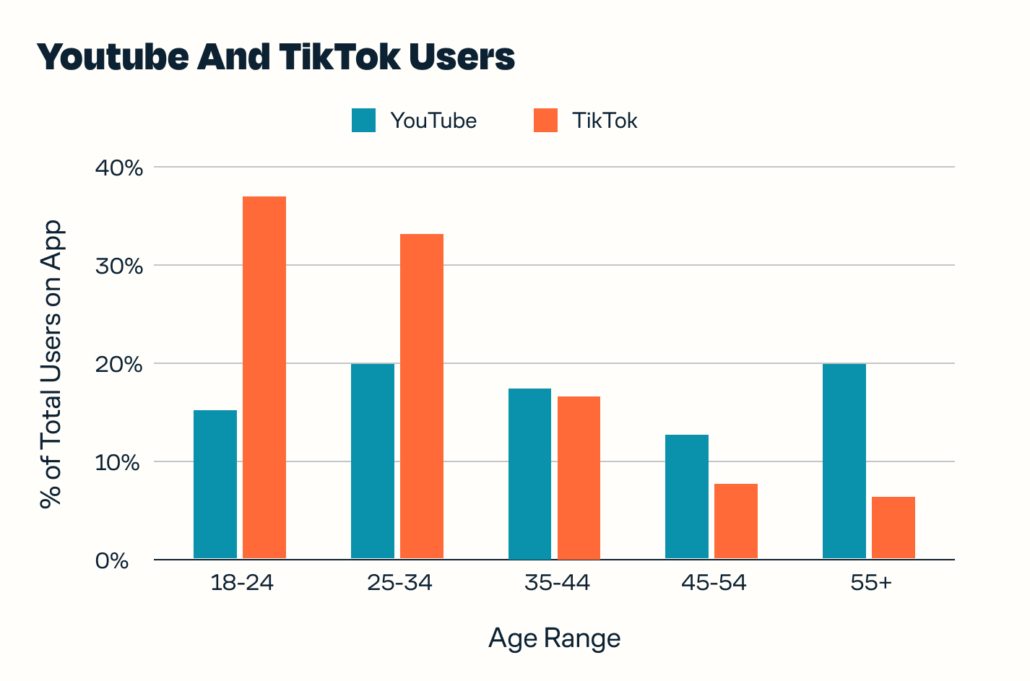
When putting these demographics side-by-side, you might notice that YouTube tends to interest an older age group compared to TikTok. On TikTok, nearly 70% of its active users each month are between the ages of 18-34. Beyond just “who” is on these platforms, it’s also important to consider the ways in which you can target these audiences effectively.
Let’s take a peek at the different options available to advertisers on each platform:
Learn more about Youtube and TikTok interests & behaviors here.
The typical age, gender, and location options are available on both platforms. The differences come into play when considering how to reach an audience via the different interest and behavioral targeting options.
YouTube is a Google property, providing you access to all of Google’s precise targeting capabilities, like in-market segments and keyword targeting. In comparison, TikTok does not offer that much control over your targeting, but you can reach users by using a mix of purchase intentions and interactions with specific videos and creators.
Outlining the right audience that aligns with your ideal customer profile (ICP) is incredibly important, as well as the creative messaging and assets that you utilize. High-performing YouTube content tends to be longer-form and have an educational element to it, whereas TikTok content tends to be shorter-form and have more of an entertainment focus.
Depending on your goals and budget, there might be a place for both of these platforms within your brand’s strategy. Let’s talk about cost next.
Cost Considerations
When thinking through which ad platforms are right for your brand, cost is likely a top consideration. What is an average CPM (Cost per Mille), CPC (Cost per Click), and CTR (Click-Through Rate). Nailing down a baseline for these costs is the first step when forecasting what potential conversion volume, cost per conversion, and conversion rates could look like.
At Tuff, we pull quarterly benchmarks for all ad platforms across all of our partners (read more about that here!). Below are those average costs and the available bidding strategies on each platform.
Bidding Strategies
- YouTube
- Viewable CPM: Bid for impressions when your ads appear in a viewable position, and you only pay when ads are measured as viewable by Active View. You may want to adjust your CPM bids to stay competitive for more valuable viewable impressions.
- Target CPA: Allows you to set your desired average cost per conversion. Some conversions may cost more than your target and some may cost less, but altogether, Google Ads will try to keep your cost per conversion equal to the target CPA you set.
- Max Conversions: Uses Google’s AI to set bids to help get you the most conversions for your campaign while spending your budget. When using this bid strategy, you can still set a Target CPA, which means that Google’s Smart Bidding will aim for as many conversions as possible at the CPA you set.
- TikTok
- Cost Cap: Control your daily costs manually by setting a maximum cost you’re willing to pay for a conversion. This option can limit your budget scaling abilities but you are able to keep your cost per conversion below the intended threshold.
- Maximum Delivery: Allows the algorithm to spend your budget as efficiently as possible. This option tends to lead to fluctuations in daily performance but typically generates the lowest cost over a longer window of time.
While both channels aim for conversions, we typically group them under the umbrella of brand-building because of their low costs (CPCs, CPVs, and CPMs). When focusing on brand-building, our strategy involves targeting users at the top-of-funnel, recognizing the need for multiple ad exposures to guide them toward conversion. Consequently, we allocate a more extended period to evaluate the campaign’s effectiveness, as opposed to expecting immediate results within a week of launch.
Pros and Cons
There are pros and cons to investing in either of these platforms, and we’ve summarized those here:
 Creative Strategies
Creative Strategies
Now let’s chat about the most fun element of any paid media campaign – creative. Specifically with video marketing, creative assets and messaging can be the most impactful elements of a campaign and have the ability to dictate a campaign’s potential for success.
At Tuff, we believe creative has the power to drive real revenue, conversions, and growth. But only when it answers to data. Our creative team is in the business of designing feedback loops, integration, and accountability between creative and performance teams so we always know just how well the creative is working (psst, read more about our ad creative process here!).
But what if we’re just looking to build brand awareness with these channels? You still need data to validate your hypotheses and gather solid learnings along the way.
While you should be designing creative according to each platform and its nuances, there is a way to work smarter and achieve a more meaningful outcome.
Specifically with YouTube and TikTok, we’ve found that some of the same messages (think: value propositions!) can translate across channels. With that in mind, we will sometimes spend our time focusing on the design and or length of the assets themselves to lean into differences in user behavior by channel vs. completely coming up with a new concept.
Here’s an example we tested for one of our partners, Fizz, a student debit card that builds credit:
YouTube Video, 0:52
TikTok Video, 0:15 cut down
Both of these videos feature the same value proposition and overall messaging theme, but they have been customized for each platform to meet the intended audience where they are when they see the ads. We know users are more inclined to watch higher-quality, longer-form videos on YouTube, whereas users are more inclined to engage with lower-fidelity, shorter-form videos on TikTok. In order to show up in the most impactful way, we tweaked one core video vs. creating two entirely new videos.
Take a peek at some more videos Tuff has created specifically for YouTube and TikTok here!
Making the Decision
When debating on which platform makes more sense for your brand, there are several different factors that should come into play, like your goals, target audience and how you can target them, how much budget you have, and what creative assets are available to you.
Your brand might benefit from YouTube’s ability to lean into in-depth, educational content that is better suited for an older audience – or maybe your brand might benefit from more engaging, trendy content that is geared towards a younger audience – maybe there’s a place for both in your funnel! No matter what you land on, it is important to understand each platform’s nuances so you can design a successful campaign strategy. Still feeling unsure of which to invest in? Set up an A/B test to experiment which is the perfect fit for your brand.
Looking for some guidance on how to get off the ground? Tuff has a team of experts ready to chat with you and help grow your business. Read more about our YouTube expertise and our TikTok expertise or reach out to us directly here!

Hey there! I’m Kate, the Head of Social at Tuff. I specialize in crafting paid social campaigns and testing performance creative to drive business results. Outside of Tuff, I enjoy tackling home renovation projects, skiing, and nerding out over the Enneagram (personality test)!
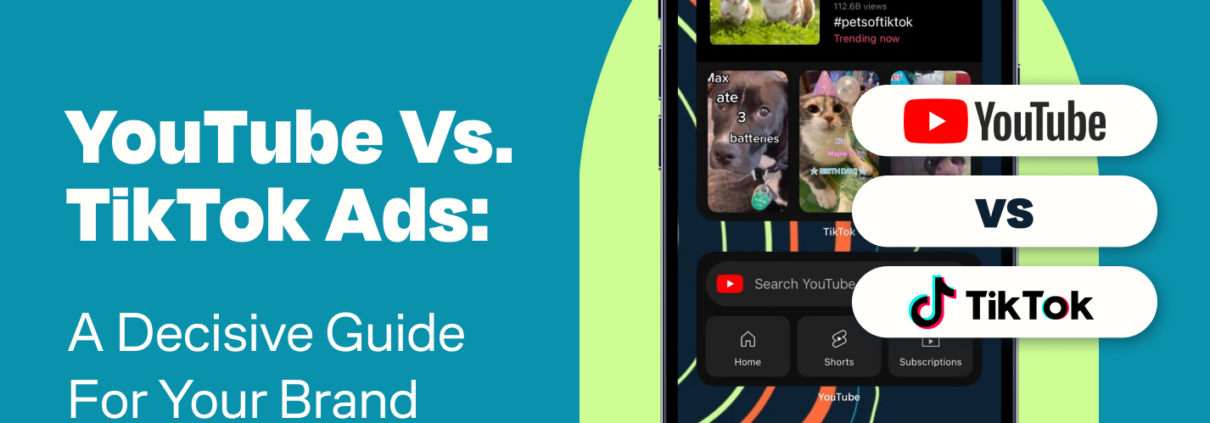

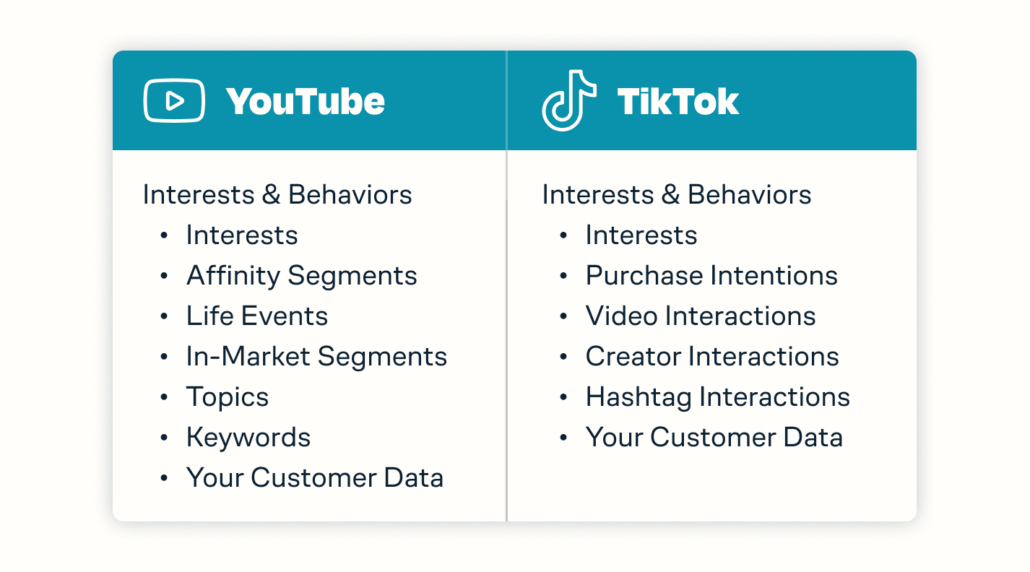
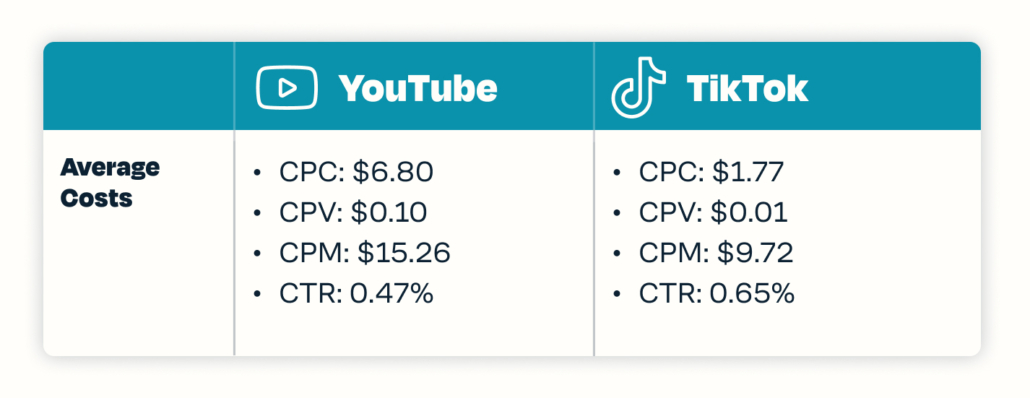
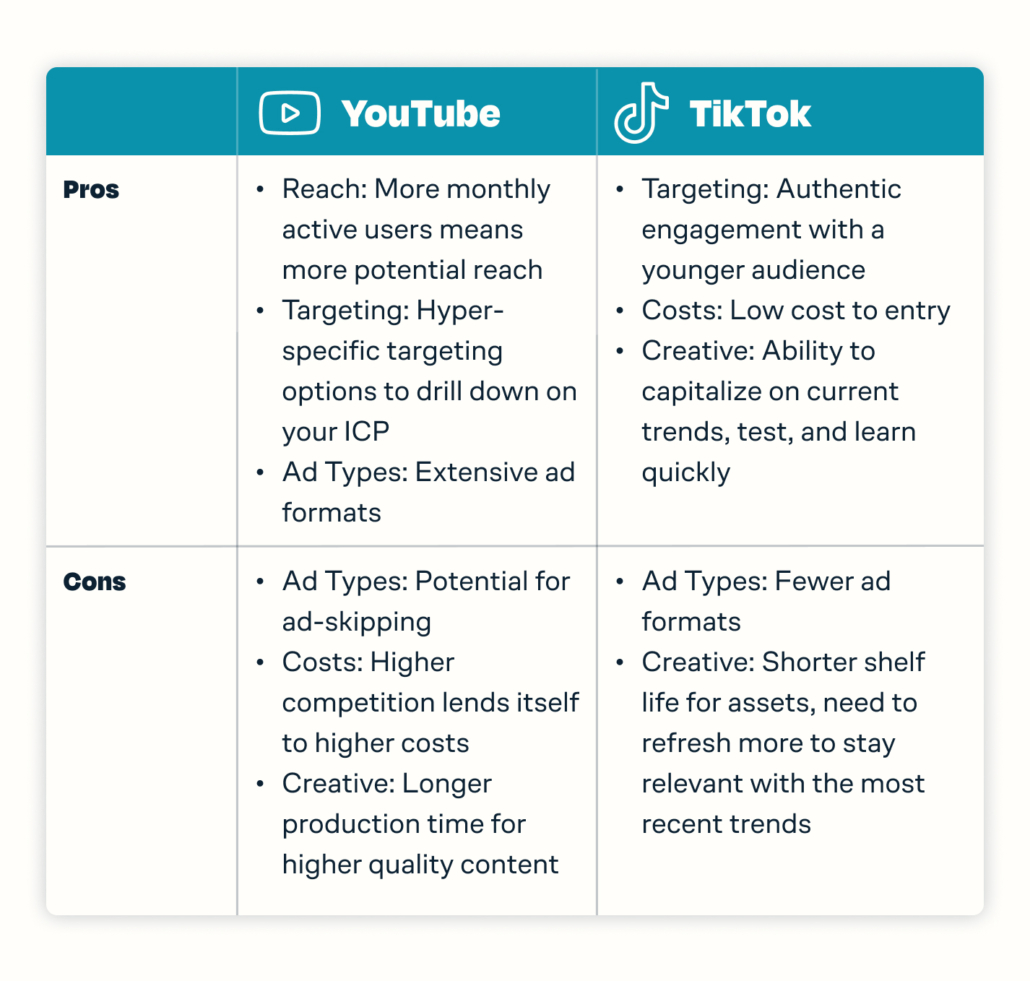 Creative Strategies
Creative Strategies



